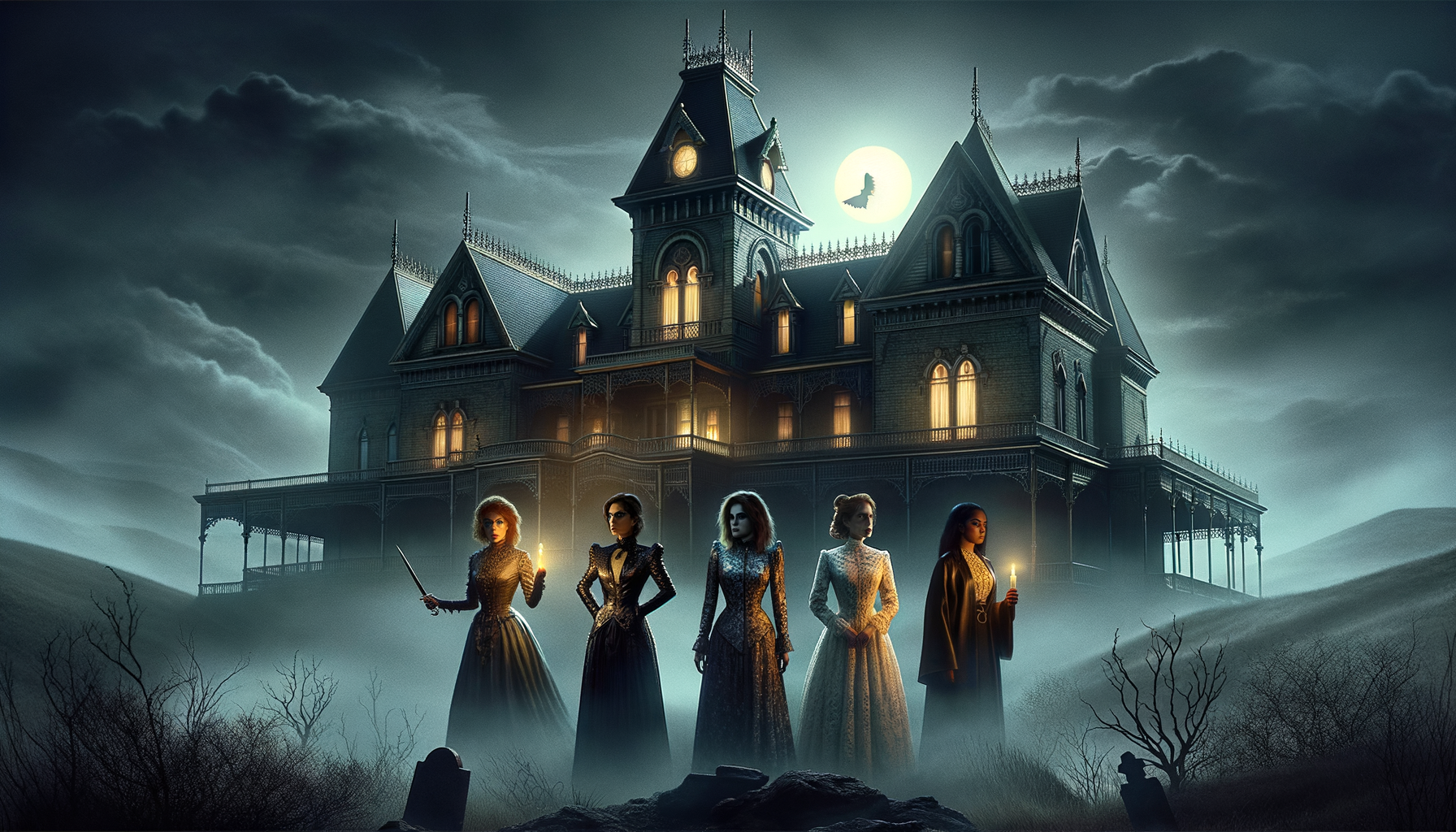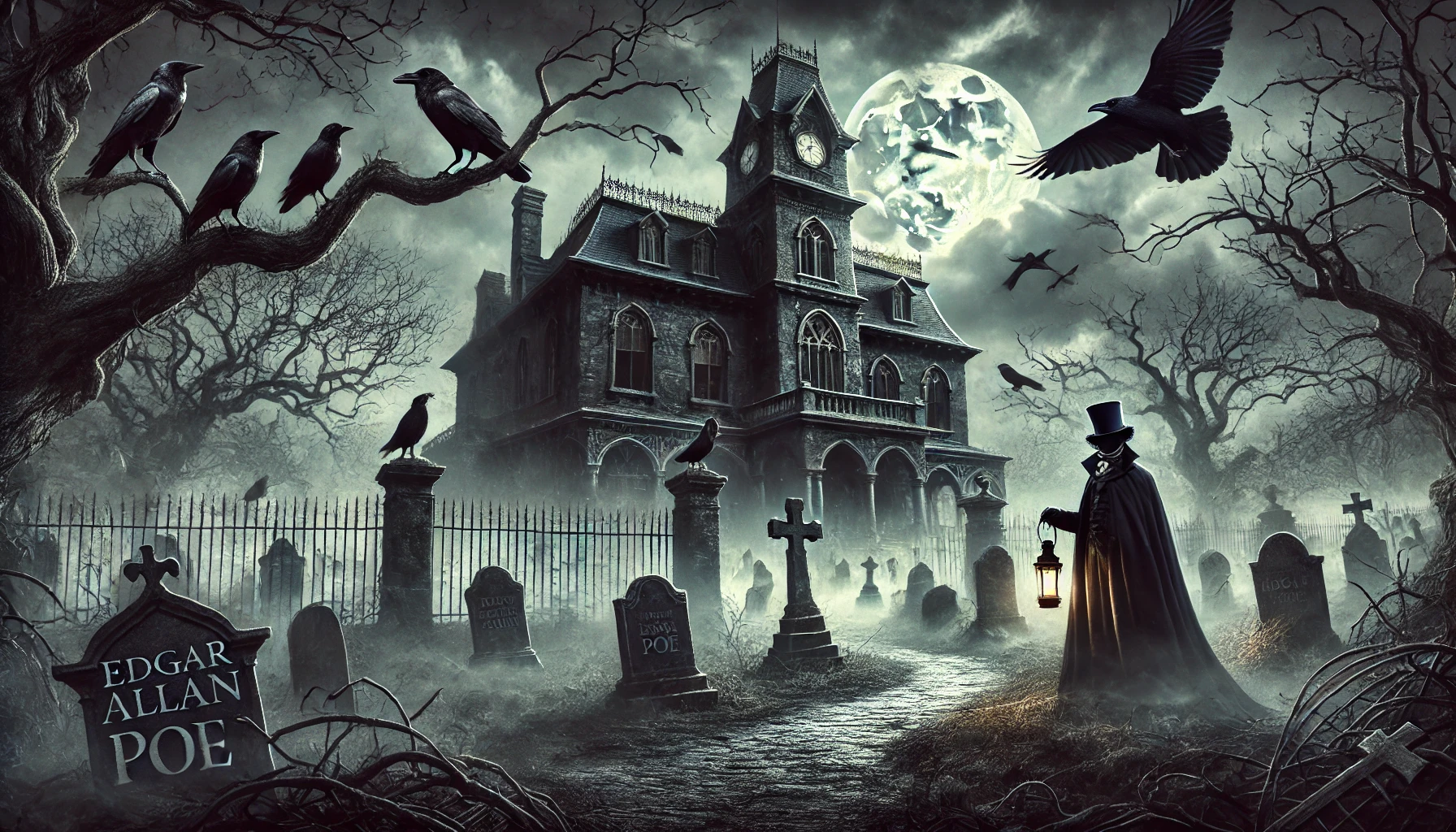Are you a fan of spine-chilling stories that keep you up at night? If you’ve ever wondered where these terrifying tales originated, you’re in for a treat. Classic horror literature isn’t just about monsters and madmen; it’s a reflection of the societal fears and anxieties of its time! By delving into the historical context of these eerie narratives, we can uncover the rich tapestry of events and influences that have shaped this beloved genre. Join me as we journey through the dark corridors of literary history. Did you know the Gothic novel, which many consider the dawn of classic horror, emerged in the late 18th century? Let’s explore how these haunting stories have evolved and why they continue to captivate us today.
Origins of Classic Horror Literature
When we talk about classic horror literature, it’s essential to start with the definition and evolution of Gothic novels. These novels are the bedrock of horror, characterized by their dark, mysterious settings, and often supernatural elements. The genre evolved significantly over time, beginning in the late 18th century and continuing to adapt through the 19th century.
Definition and Evolution of Gothic Novels
Gothic novels are typically set in gloomy castles or old mansions, filled with hidden passages, dungeons, and other eerie settings. They explore themes of terror, madness, and the supernatural, often reflecting the anxieties of their time. As the genre evolved, it began to include more psychological elements, delving into the human mind’s darker aspects.
Characteristics of Gothic Novels
Some hallmark characteristics of Gothic novels include a brooding atmosphere, a sense of decay, and an overarching feeling of dread. These stories often feature a lone hero or heroine, who must navigate through these dark and foreboding settings, uncovering secrets and facing supernatural adversaries.
Key Early Works
One of the earliest and most influential Gothic novels is “The Castle of Otranto” by Horace Walpole. Published in 1764, this work is often considered the first Gothic novel, establishing many of the genre’s key elements, such as the haunted castle and the mysterious, often tragic, family history.
Socio-political Influences of the 18th and 19th Centuries
The socio-political landscape of the 18th and 19th centuries had a profound impact on Gothic literature. The Enlightenment, with its emphasis on reason and science, created a fertile ground for stories that explored the limits and dangers of human knowledge. Romanticism, with its focus on emotion and the sublime, also played a crucial role, infusing horror literature with a deeper sense of psychological and emotional complexity.
The Impact of the Enlightenment on Gothic Themes
The Enlightenment’s focus on reason and progress often clashed with the darker, more irrational elements of Gothic literature. This tension is evident in many Gothic stories, which explore the dangers of unchecked ambition and the limits of human understanding.
Romanticism’s Influence on Horror Literature
Romanticism brought a new depth to horror literature, emphasizing emotion, nature, and the sublime. This movement allowed horror writers to delve deeper into the human psyche, exploring themes of madness, obsession, and the supernatural in more complex and nuanced ways.
Key Authors and Pioneers of Classic Horror
Several key authors helped shape the genre of classic horror, each bringing their unique perspective and style to the table.
Mary Shelley and “Frankenstein”
Mary Shelley’s “Frankenstein” is one of the most iconic works of classic horror literature. Inspired by a ghost story competition and her own experiences with loss and grief, Shelley created a tale that explores the dangers of playing God and the ethical implications of scientific advancement.
Inspiration and Historical Background
Shelley wrote “Frankenstein” during a time of great scientific and technological change. The novel reflects the era’s fascination with science and its potential to both create and destroy.
Its Impact on the Genre and Society
“Frankenstein” had a profound impact on the horror genre, introducing themes of creation, responsibility, and the consequences of hubris. It also sparked discussions about the ethical implications of scientific advancement, which remain relevant today.
Bram Stoker and “Dracula”
Bram Stoker’s “Dracula” is another cornerstone of classic horror literature. This novel encapsulates many of the Victorian anxieties of its time, such as fears of immigration, disease, and the unknown.
Victorian Anxieties Encapsulated in the Tale
“Dracula” reflects the fears and uncertainties of the Victorian era, using the figure of the vampire to explore themes of invasion, sexuality, and the clash between modernity and ancient evil.
Legacy and Adaptations of Count Dracula
Count Dracula has become one of the most enduring figures in horror literature, inspiring countless adaptations in film, television, and other media. His legacy continues to influence modern horror stories and the portrayal of vampires.
Edgar Allan Poe: The Master of Macabre
Edgar Allan Poe is often regarded as the master of macabre, known for his dark themes and innovative narrative techniques.
Exploration of Poe’s Dark Themes and Techniques
Poe’s works often delve into themes of madness, death, and the supernatural. His use of unreliable narrators, intricate plots, and atmospheric settings set the standard for psychological horror.
Notable Works and Their Influence
Some of Poe’s most notable works include “The Tell-Tale Heart,” “The Fall of the House of Usher,” and “The Raven.” These stories have had a lasting influence on the horror genre, inspiring countless writers and filmmakers.
Societal Fears and Anxieties in Classic Horror
Classic horror literature often reflects the societal fears and anxieties of its time, using supernatural and psychological elements to explore deeper truths.
Reflections of Social and Political Turmoil
Wars, revolutions, and other social upheavals have always influenced horror narratives. These events often serve as the backdrop for stories that explore the darker aspects of human nature and society.
How Wars and Revolutions Shaped Horror Narratives
The chaos and uncertainty of wars and revolutions often find their way into horror literature, serving as metaphors for the fear and instability of the times.
Examples from Literature Reflecting Societal Fears
Works like “Frankenstein” and “Dracula” reflect the societal fears of their respective eras, using horror to explore themes of scientific advancement, immigration, and the clash between tradition and modernity.
Scientific Advancements and Their Influence
The rapid scientific advancements of the 18th and 19th centuries had a significant impact on horror literature.
“Frankenstein” and the Era’s Fascination with Science and Ethics
“Frankenstein” is a prime example of how scientific advancements influenced horror literature. The novel explores the ethical implications of playing God and the potential consequences of unchecked ambition.
Other Works Influenced by Scientific Discoveries
Other horror works, such as those by Edgar Allan Poe, also reflect the era’s fascination with science and its potential to both enlighten and terrify.
Evolution of Horror from Classic to Modern Times
Horror literature has evolved significantly from its Gothic origins, adapting to new cultural and societal contexts.
Transition from Gothic to Contemporary Horror
The transition from Gothic to contemporary horror involved a shift in themes and styles, reflecting the changing anxieties and concerns of society.
How Early 20th-Century Writers Expanded the Genre
Early 20th-century writers like H.P. Lovecraft and Shirley Jackson expanded the horror genre, introducing new themes and narrative techniques.
Key Transitions in Themes and Styles
The themes and styles of horror literature have continued to evolve, reflecting societal changes and technological advancements.
The Enduring Legacy of Classic Horror
Despite these changes, the influence of classic horror literature remains strong.
How Modern Horror Authors Draw from Classic Elements
Modern horror authors often draw from the elements established by classic horror writers, using Gothic settings, psychological horror, and supernatural elements to create new and terrifying stories.
Current Relevance and Adaptations in Media
Classic horror stories continue to be adapted and reimagined in various forms of media, from films and TV shows to video games and graphic novels.
Cultural Impact and Adaptations of Classic Horror
Classic horror literature has had a profound cultural impact, influencing not only literature but also film, television, and popular culture.
Influence on Film, TV, and Popular Culture
The influence of classic horror literature can be seen in countless films, TV shows, and other forms of popular culture.
Notable Adaptations and Their Significance
Notable adaptations, such as the numerous film versions of “Dracula” and “Frankenstein,” have helped to cement the legacy of these classic tales.
Classic Horror in Contemporary Media
Classic horror stories continue to be a rich source of inspiration for contemporary media, from blockbuster films to critically acclaimed TV series.
The Ongoing Fascination with Classic Tales
The fascination with classic horror tales endures, as these stories continue to captivate and terrify new generations of readers and viewers.
Why Classic Horror Remains Popular Today
Classic horror remains popular because it taps into universal fears and anxieties, using timeless themes and characters to explore the darker aspects of human nature.
The Genre’s Impact on Modern Audiences
The impact of classic horror on modern audiences is profound, as these stories continue to resonate and inspire new works of horror literature and media.
Conclusion
In summary, the historical context of classic horror literature reveals a genre deeply intertwined with the fears and anxieties of its time. From the dark and stormy Gothic novels of the 18th century to the ever-evolving horror tales of today, the journey of these stories sheds light on human nature and societal changes. As we look forward to new and innovative horror narratives, let’s not forget to appreciate the rich historical roots that continue to inspire and terrify us. Ready to dive deeper into the world of horror? Check out our recommended reading list or must-watch adaptations to immerse yourself in these timeless tales. Keep the lights on – you never know what might be lurking in the shadows!



